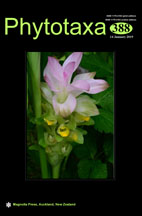Abstract
Here we describe the new tribe, Parartocarpeae, within the Moraceae (mulberry family). The tribe comprises two small Malesian genera, Parartocarpus and Hullettia, and brings the total number of Moraceae tribes to seven. Evidence for this new designation comes from a phylogeny based on 333 nuclear genes sequenced using target enrichment via hybridization (hybseq). Morphological characters that set Parartocarpeae apart from other Moraceae tribes include the combination of the following characters: lateral nonamplexicaul stipules, spirally arranged leaves without annulate stipule scars, the presence of a single layer of involucral inflorescence bracts, and the lack of perianth tissue, wherein flowers are embedded in cavities of the receptacle. With the designation of Parartocarpeae, the tribe-level circumscription of Moraceae is now well-supported by phylogenetic methods. Because the phylogenetic markers employed here work well throughout Moraceae, they can facilitate much needed work at the genus level in the family.

